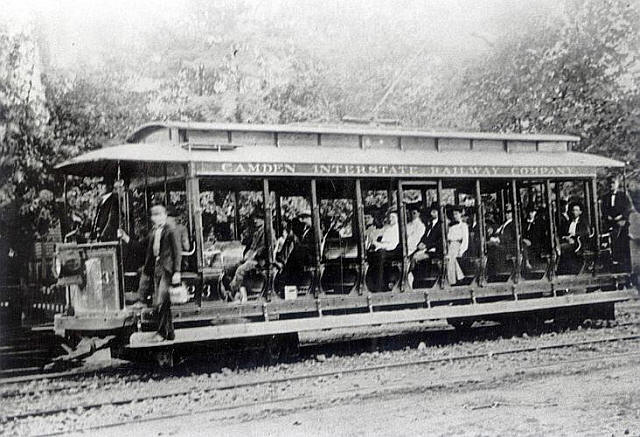
Camden Interstate Railway
------------------------------------------------------------------------------------------------------

The Camden Interstate Railway linked Huntington, Ceredo
and Kenova in West Virginia, Catlettsburg and Ashland
in Kentucky and (by ferryboat) Ironton in Ohio.
Courtesy of James E. Casto
------------------------------------------------------------------------------------------------------
In an era before paved roadways,
streetcars were a transportation mainstay.
The first streetcars traveled on rails but were horse drawn. Richmond,
Virginia, was the first city to put its horses out to pasture, replacing
them with electricity drawn from an overhead wire. That was in
February 1888. In December of the same year, Huntington
debuted its own electric streetcar. Local lore says
Huntington was the nationís second city
to have an electric streetcar line.
In the 1890s, the separate streetcar lines
in Huntington and the nearby
Kentucky communities of Catlettsburg and Ashland had something
in common ó all were running in the red. Huntington
businessman Z.T. Vinson had the idea of
combining the separate lines and linking
the towns. To finance his idea, he
turned to Johnson N. Camden,
a successful oil man and
member of the
U.S. Senate.
With the infusion of Camdenís cash,
Huntingtonís Consolidated Light
and Railway Co. became the Camden Interstate Railway Co.,
linking Huntington, Ceredo and Kenova in West Virginia,
Catlettsburg and Ashland in Kentucky and (by ferry
boat) Ironton in Ohio. Passengers flocked to
the new system, which generally operated
from 5 a.m. to midnight.
By the end of the 19th century, most towns
had streetcar lines,
and many of those opened picnic groves along their routes
to boost summer-time traffic on weekends and holidays.
Thatís what prompted the Camden Interstate Railway
to establish Camden Park, just outside Huntington.
Camden died in 1907, and with his death, the streetcar line
changed
its name again, this time to the Ohio Valley Electric Railway Co.
The system began replacing its streetcars with buses in 1925,
with what became the Ohio Valley Bus Co. taking
its last streetcar out of service in 1937.
-----------------------------------------------------------
Note: This Article and picture appeared in the Herald-Dispatch Newspaper on Oct. 18, 2022..
-----------------------------------------------------------
[ Back ]